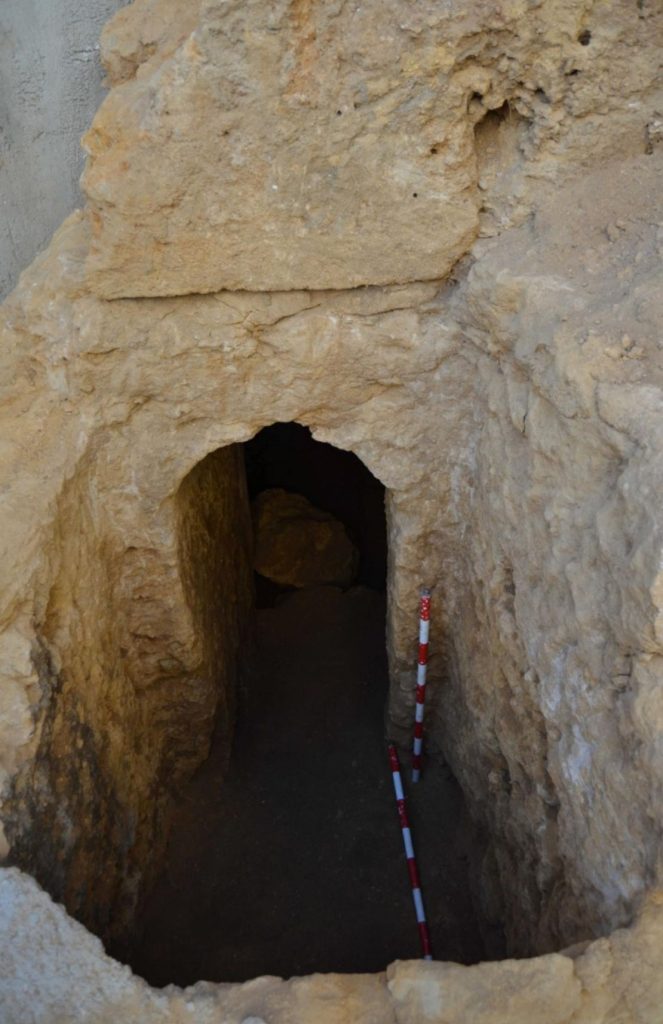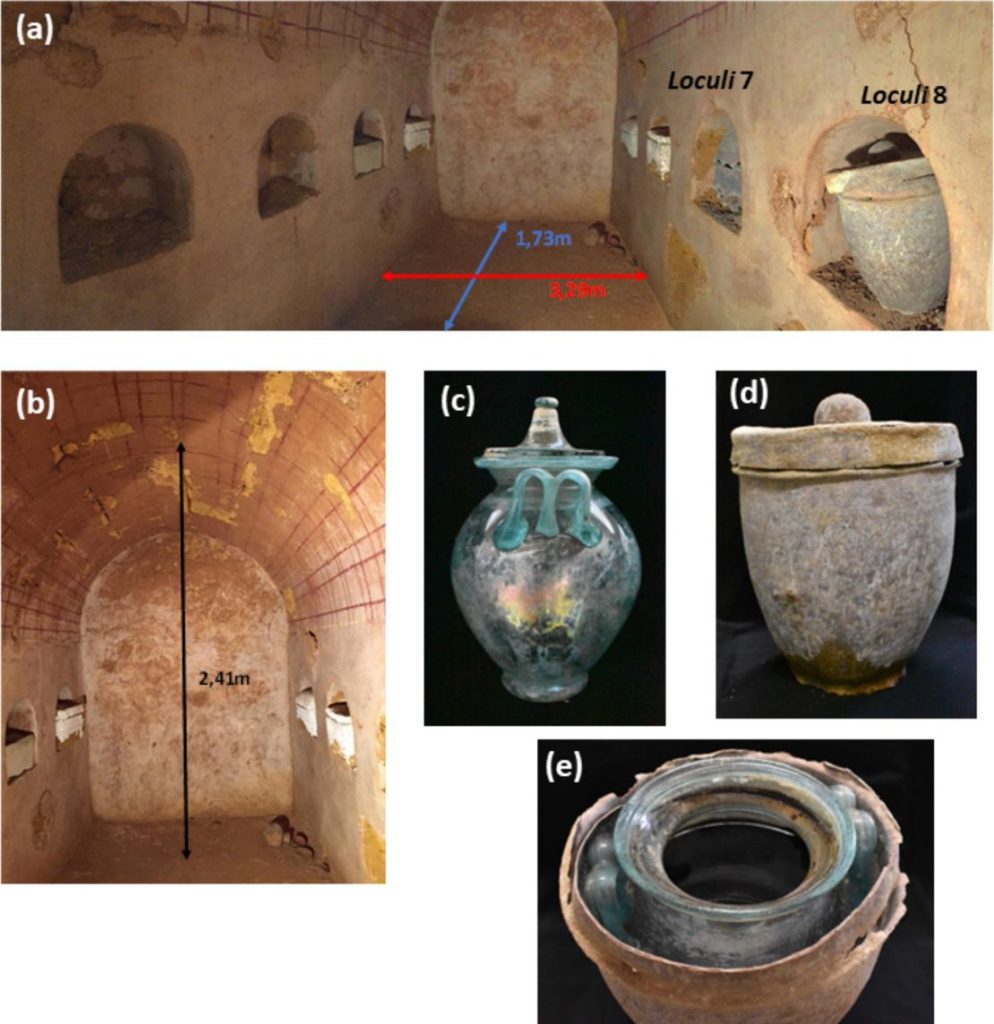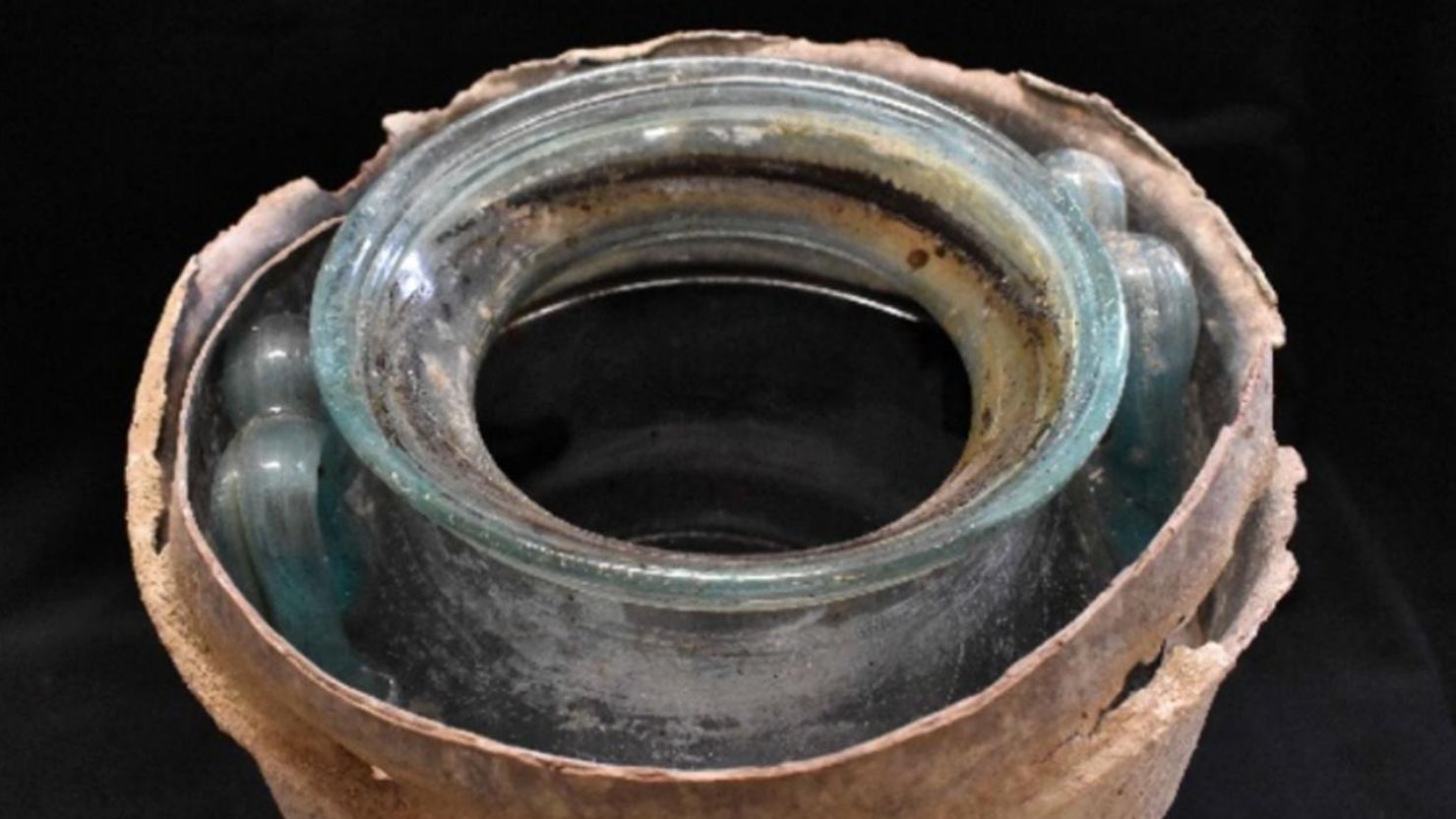Archaeological excavations in Carmona, near Seville, led in 2019 to the discovery of a Roman tomb dated approximately to the first half of the first century AD. Among the six urns discovered then, one was found to be full of liquid (along with human ashes), and not just any liquid, but a wine similar to today’s fino sherry, CNN informs.
The discovery of the tomb itself was a feat, as it was an underground tomb excavated directly into the rock. On the walls of the tomb were six vessels made of different materials – glass, lead, limestone, or sandstone, each containing the remains of a single person – two of them identified by inscriptions as Senicio and Hispanae. While one of the vessels contained a bottle of patchouli perfume, another drew attention because it was full of reddish-brown liquid.
After analysis, it was found to be wine, mixed with human ashes, and it also contained a gold ring decorated with the image of Janus, the Roman two-faced god. Polyphenol analyses confirmed that it was wine specific to the Andalusia region, and the absence of syringic acid demonstrated that, despite the color, it was wine made from white grapes.


Apparently, one of the researchers who analyzed the wine, after determining that it posed no microbiological risks, could not resist a unique tasting, despite the 2,000 years of hosting human remains. He described the wine as slightly salty…
The urn from Carmona predates by three centuries the previous record held by the Speyer bottle, believed to have been buried in a Roman tomb around 325 AD. And no, neither of them seemed to be a wine-jam, as you’ve often heard stories about old wines. But that is a myth we’ve already debunked here: https://winesofromania.com/vinul-marmelada-o-minciuna-si-atat/
📷 Photo Source: Daniel Cosano/Juan Manuel Román/Dolores Esquivel/Fernando Lafont/José Rafael Ruiz Arrebola







